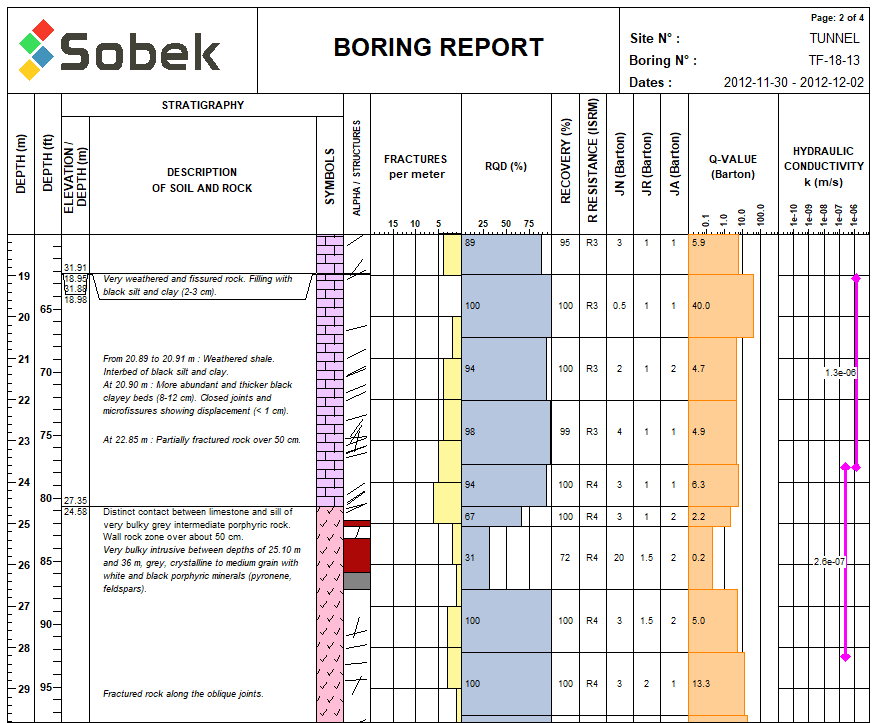The quantitative classification of rock masses is established based on several factors, including the rock strength, presence of water and description of discontinuities. This comprehensive analysis is subject to several potential errors due to the handling of a massive number of data and equations.
Geotec’s new rock mechanics feature is used to quickly enter raw data about the discontinuities and the runs, and also establish the Barton and RMR parameters based on various criteria.
Default parameters for the borehole
Default parameters for the number of joints and the characterization of joints and runs can be defined for each borehole. These default values greatly speed up the data entry.
The calculations can be adjusted, for example to indicate which criteria to use when calculating the RMR and Barton Q.
The RQD, SCR and number of joints per run can be recalculated systematically by Geotec based on the joints defined for the borehole.
Up to 5 joint sets can be defined, including sets with 4 sides and conical sets. These definitions are used to determine to which set each joint belongs and to do joint sets statistics.
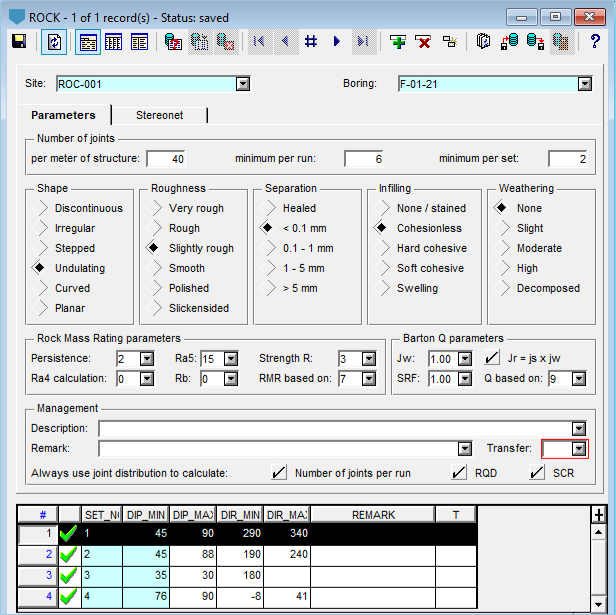
Description of rock joints
In the joints entry form, one can describe the joints from a rock core or geocamera film as well as major structures.
In addition to its depth, one indicates the type of joint and its angles Alpha and Beta, from which Dip and Direction are calculated.
Based on Shape, Roughness, Separation, Infilling and Weathering, the RMR and Barton Q parameters are established for the fracture.
Geocamera analysis
If a geocamera file from WellCad, Dips or other software is imported into Geotec, the textual values are parsed. The fracture type, shape, roughness and separation are then automatically selected.
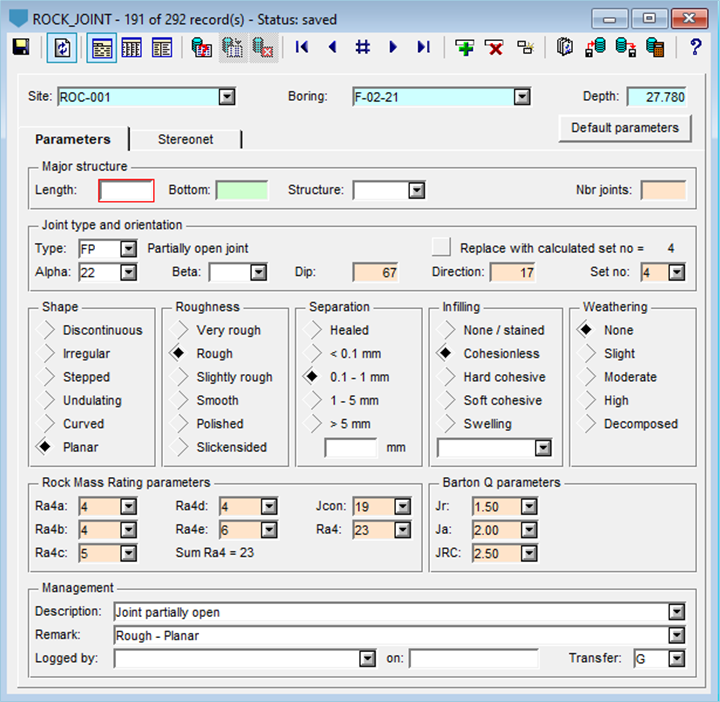
Description of runs
The runs of a borehole are defined by their depths and qualitative description of the rock. The solid core recovery, RQD, number of joints and joint spacing are all calculated based on the joints defined, which are listed at the bottom of the form with their parameters.
The rock mass strength is based on UCT and PLT tests, if done.
All parameters of the RMR and Barton Q systems are suggested based on data. The classification of the rock mass is calculated for the criteria established in the default parameters.
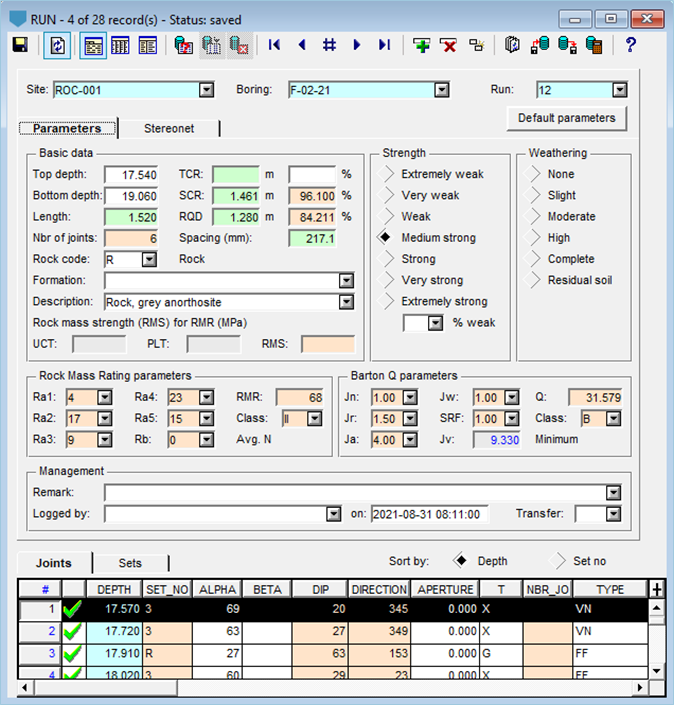
Stereonet
A stereonet is displayed in vector representation, showing all the joints of the current borehole with the joint sets defined.
The joint sets statistics indicate the number of joints, RMR and Barton Q per joint set, based on joint average or weighted average, and for the minimum and maximum value and the domain joint set.
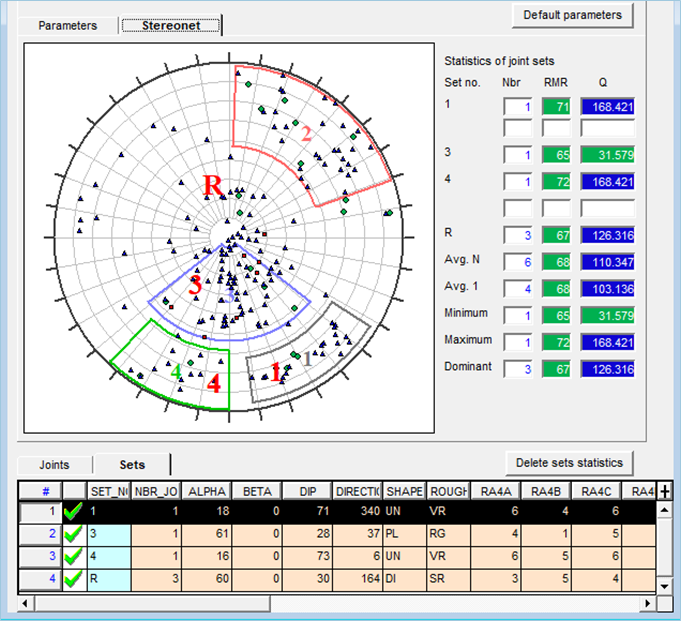
Graphic display
The borehole reports produced by Log for rock mechanics projects can include the following visual features, in addition to depth-dependent data displayed as Text, Histogram or Polyline.
- Rock joints with symbols oriented with alpha and beta or dip and direction
- Number of joints or joint spacing per meter or per fraction of a meter
The value is calculated by Geotec based on joints defined in the borehole - Major structures highlighted with color
- Colors for range of values such as RQD, RMR or Barton Q
- 3D, optical and acoustic images from geocamera
